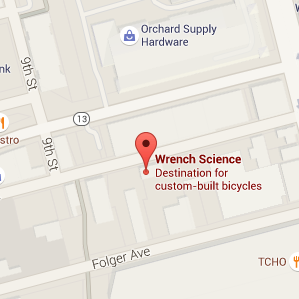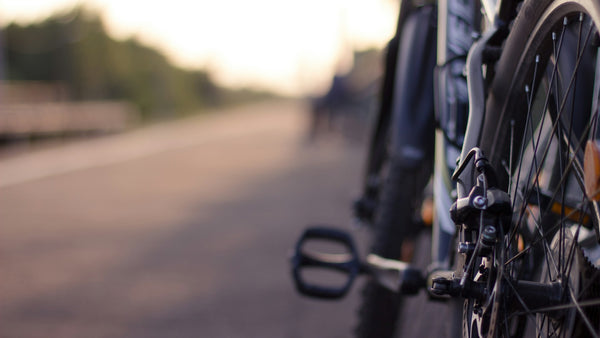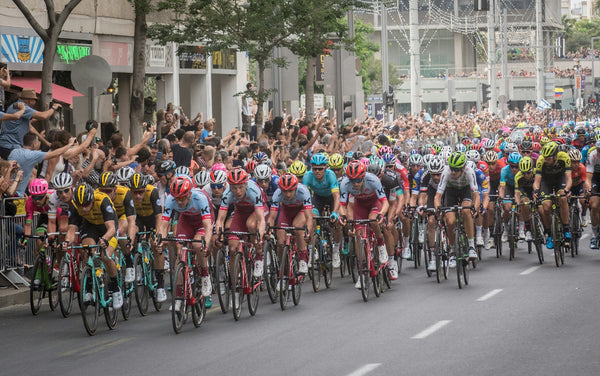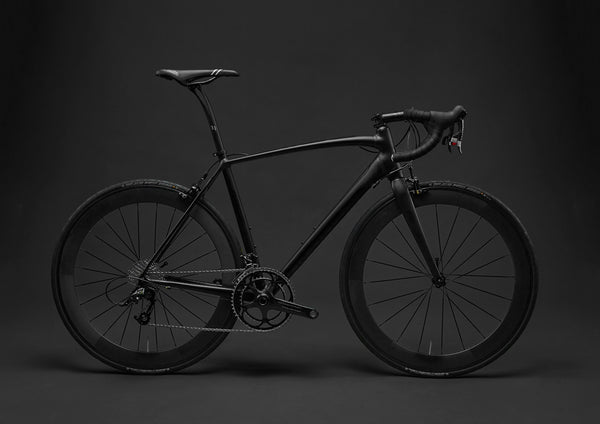Many of us have turned to cycling not just as a means of transportation, but as a way to get and stay fit. Whether you are training for a big race or Gran Fondo, or are just using your bike as a way to enjoy fresh air in the outdoors, you are building muscles and increasing your endurance.
Just looking at your legs after a few weeks of regular riding will give you a good idea of what muscles you are using for cycling most. But the answer of which muscle groups cycling works goes much deeper, and knowing what you're using will give you a better idea how to improve your efficiency and performance on the bike.
Which leg muscles does cycling use?
The muscles that do the most work when cycling are the quadriceps. Those are the set of large muscles on the front of the leg between the knee and hips. They are called the “quads” because the muscle group is made up of four main muscles: the Rectus Femoris, the Vastus Intermedius, the Vastus Lateralis, and the Vastus Medialis.
The Rectus Femoris is the largest of the four muscles, stretching over the top of the thigh, running from the hip to the knee. It has the biggest job in the pedal stroke and consequently the one you will notice developing or toning first once you start cycling. The Vastus Lateralis is the muscle on the outside of the thigh, and along with the Vastus Medialis contributes most on the upstroke when you are pedaling. The Vastus Intermedius is underneath the Rectus Femoris, so contributes to the pedal stroke, but is not visible.
Cycling and your glutes
Working in concert with your quads, the glutes are the next most important muscle group that you use when riding your bike. When we say glutes, we are referring to three muscles in your backside: the Gluteus Maximus, the Gluteus Medius, and the Gluteus Minimus.
Like the quads, the three gluteal muscles have different roles during the pedal stroke, all of which make it possible for you to produce power and remain stable on the bike. The Gluteus Maximus is the large hip flexor that produces the greatest amount of power when pedaling, while the Gluteus Medius and Gluteus Minimus are stabilizing muscles that help you to get up and pedal out of the saddle and remain stable while riding. If you’ve ever spent several weeks or even months only riding on a stable indoor trainer (not rollers) you may have noticed the Gluteus Medius and Gluteus Minimus in particular feeling quite weak once you returned to riding on the road, since they are much less engaged when riding indoors.
The hamstrings
As the yang to the quadriceps yin, the hamstrings flex and relax in conjunction with the quads during the pedal stroke. Made up of three different muscles - Biceps Femoris, Semimembranosus, and Semitendinosus - the hamstrings mainly help flex the knee particularly during the upstroke while pedaling.
They can also be the culprit behind cycling knee pain if you have your saddle height too high or too low. Getting a proper bike fit can help you not only avoid pain and injury, but will help you engage each muscle group, like the hamstrings, efficiently.
The calf muscles
Shapely calf muscles are perhaps the most recognizable indicator that someone is a cyclist. Interestingly, the calf muscles contribute less than you might think to the overall power of the pedal stroke, with estimates being around only 20% of the power coming from the calf muscles. Of course, that doesn’t stop us from feeling a certain amount of pride the more chiseled and sinewy our calves appear.
Made up of the Gastrocnemius Lateralis and Gastrocnemius Medialis (the two largest calf muscles on the outside and inside of the leg) and the Soleus (the narrow muscle on the outside below the Gastrocnemius Lateralis), these muscles work primarily at the bottom of the pedal stroke.
Another muscle that cycling works is the Tibialis Anterior that is placed at the front of the calf, on the shin. This muscle flexes the ankle to pull the toes up or down, and becomes important in the final phase of the pedal rotation when your foot nears the top of the stroke again. There is still debate about whether it is efficient to pull up intentionally on the pedals when in that final phase – for many years trainers would teach their athletes to do that, though as a conscious effort, it has fallen out of favor in recent years – that is a part of the stroke that will engage the Tibialis Anterior the most.
Don’t forget your core
Though professional cyclists have notoriously weak-looking upper bodies, it’s important to remember that the core muscles such as the abdominal and back muscles are extremely important to help give the legs a solid platform on which to work. These muscles help with stability and overall form on the bike.
When you see pros riding with beautiful form, not a hint of movement in the upper body and legs turning like pistons, that’s a sign that they have extremely well developed core muscles that allow the pedal stroke to be as smooth and powerful as possible. Core muscle strength can improve your in-the-saddle climbing capabilities, saving energy and making you faster.
Concentrate on keeping your core completely erect and solid while pedaling on an average to steep incline (~6%-10%). Try it and see if you notice the difference. If you have trouble doing that, then incorporate some additional core exercises to your stretching routine, such as the one we suggested in our article on how to warm-up before cycling, and see whether that helps you improve your performance.
Interior muscles for breathing
Not every muscle we use for cycling is visible. The deep muscles around the ribs and diaphragm, in addition to the abdominals are essential for breathing. Though breathing happens unconsciously, that is to say that we breathe normally without even thinking about it, exceptional cardiovascular capabilities are essential to improved cycling performance.
Respiratory muscle function can improve your endurance and overall performance by helping to maximize lung function while diverting as little blood flow away from the major muscle groups working to pedal the bike.
Arms, shoulders, neck muscles
Though the muscles in the arms and shoulders might be less built up in the course of regular cycling, they are certainly important for support. If you’ve ever finished a ride with sore shoulders and neck muscles, you’ll know that these muscles are definitely being used. Important for stability as well as support, the muscles in the arms, shoulders, and neck benefit from cross work out to ensure that they can provide the proper level of help required when you are riding.
Most cyclists don’t want to take on extra bulk in the upper body, but that is unlikely to happen with a regular level of free weights routine and core strength workouts. Keep in mind, too, that if you are routinely finishing your rides with extremely sore upper body muscles like the neck and back, you may want to consult an expert bike fitter to make certain you are not putting undue pressure on those regions through a poor bike fit.
What muscle groups does cycling work - conclusion
So the short answer is, cycling works a lot of muscles in the body. That’s one of the major reasons it is such a great low impact, full body way to exercise. Whether you are riding on a road, gravel, mountain, track, indoor and even an e-bike, you are giving your whole body a great workout, starting mostly with the legs, but moving right up to the very top of the head and shoulders.
It's important to note that if you are just starting out riding, you should slowly ramp up your workload to avoid stress injuries. And keep in mind that off-bike workouts like stretching, free weights, and core strength efforts will also help you avoid injury and improve your overall cycling performance. Happy riding!



































































































































































































































































